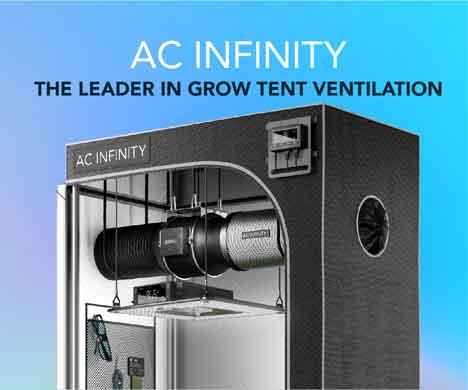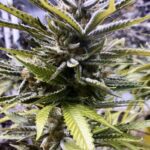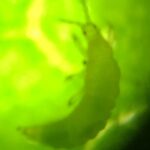Hey DGC, Dude, Scotty and Guru. Wanted to show off my current automated grow as I’ve heard a lot about monitors and controllers on the show lately and the talk about swinging humidity and temp (and preemptively making changes) made me make the post.
My setup:
(2) 4×2 grow tents to use in a semi-perpetual grow (Tents named after friends that are no longer here: Davon and Norby)
Davon: Currently week 9 of flowering Durban Poison in DWC (yea, I know) under 2x Mars Hydro SP150’s (~52 DLI) and Advanced Nutrients (yea, yea, I know)
Norby: Week 4 of veg for Bruce Banner seeds, sitting in autopots/coco/perlite/ewc under CFL’s
Hub: Raspberry Pi 4 (~$100) running Home Assistant operating system with a GoControl ZWave controller (~$45) to speak to my wireless sensors and switches.
Sensors: Each tent is using an Aeotec 6 in 1 multisensor to report temp, humidity, lux, motion, vibration and UV. Each sensor gets calibrated every month and reports their readings every 2 seconds.
Switches: Zooz ZWave Power Strips ($70 each) are used to control the tent lights, fan and heater. Additionally, because I got some on sale, they are also monitoring and confirming function of DWC pumps and logging total power usage/kWh so I can make sure my wife doesn’t think I’m running up the bill more than I am. These could be cheaper/non-zwave switches and it would significantly lower cost at the expense of not having power reporting (up to you if you need it).
Home Assistant is running at all times and I have built automations to use the settings page to dictate what must happen in the grow. This started as simply being able to control my lights and determine the amount of power I was using and has continued to expand with what I’ve learned from this show.
For example: with the talk of VPD being so crucial, I found myself bookmarking the VPD guide to tell if I was in a good spot or not. With the customizable nature of this setup, I was able to take the VPD formula (shoutout to Pulse) and create my own VPD reading in real-time, and set alerts to my phone, SMS or a chat room (Discord, Slack, etc). With Guru recently talking about better controlling humidity swings proactively to achieve perfect VPD 24/7, I now can customize this controller based on the known times lights will go on/off to adjust the values based on the value of the VPD.
The system isn’t without its flaws and there have been some > 100 degree days when a heater ran off on me or some chilly garage nights where the safeties didn’t trigger as needed, but what’s a hobby without adversity. As you see below, my system is pretty dialed in now and I have great reference points to go deeper.
- PROS:
- Scalable: as I get another tent or stop using one, I just have to pay for more switches to control things and sensors to get readings. For ~$100 I can have complete control and reporting for a new tent/area/lung room.
- Customizable: Davon is a taller tent than Norby, so when I harvest Durban Poison I can move Bruce Banner into Davon and dry Durban Poison in Norby – with its own humidity and temperature settings.
- Upgradable: I began just controlling the lights and have upgraded more and more features as I’ve learned. As ‘new’ hacks come out I can continue to adjust the flow of this as I want.
- CONS
- Cost: easily the biggest limiting factor I think. Once I’ve spent the money I haven’t had many sad days
- Learning curve: Home assistant and design are a steep curve, but with some playing around and a need to bring your grow to a higher level (or take a vacation), I was able to get this running in just a few weeks total time
- Failure: Once in a while, something will fail. This isn’t a mechanical system and poor programming or just a hiccup in your network can cause issues. You need to build fail-safes into the system, which can be a PRO as it causes you to think about what can fail, how, and how you would fix it.











dude, I applaud your ingenuity. Pretty cool.
GrowBro Tech! Hellyeah! i need one so how much for a set-up? lol pretty sweet dude
I’m working on a more step-by-step write up on it and I’ll gladly chat with anyone looking to do similar or share my configs. Thanks for the comment!
Dude really digging the setup. Any chance you would be willing to share your configs privately or thru github?
I’m currently in the process of a similar setup. So far I have my temp/hum sensor and smart strip all configured. I’m more so interested in how you organized your cards and your “settings” section for each plant.
Thank you for the ideas! Trying to automate my RDWC system more and this is some great information!!
Absolutely amazing dude! I was looking up a way to automate my tent with a raspberry and this confirmed it can be done!
You can set this up with an old PC as well, with a little more tech no-how. home assistant has a great setup walkthrough! Thanks!
WOW…Super Canna-Nerd Hack for sure…that setup is twice as bad ass as anything you could buy off the shelf….many props
Awesomeness! I’ve been using a DHT11 for all my temp and humidity monitoring via an Arduino and then communication back to my Pi via serial. I may need to evaluate the Aeotec. Since it’s sending 6 data readings I’m assuming it’s a serial sensor?
The Aeotec is a Zwave sensor that communicates over the USB GoControl Zwave controller. The data readings are set to send out time based or when crossing a threshold. If you go wireless, the readings are sent infrequently for battery. I have my sensors plugged into the USB ports on the power strips and then configured temp, humidity and lux to be in a Group with the highest frequency of reports. Other configs you can change on the Aeotec are interval to report (down to 0.1 on temp/humidity), LED (to keep off – if it flashes in lights off it’ll mess up flowering), etc. Great sensor for $60 but you’ll need a ZWave controller to translate to the network. GoControl lets you also add Zigbee items later.
Gotcha, so wireless from sensor to GoControl, serial into Pi. Just trying to figure if I could read the GoControl input from Python. I bet so. I’ve been running Cayenne on my “switch flipping” controller and the Python GPIO library is pretty capable. Additional readings from aeotec should enable me to also flip on greenhouse LEDs on a cloudy day. Hmmmmmm……
Thanks for posting, for reals! I may have just seen a way to boost efficiency and save some labor.
wonder what you could do with those ph sensors for the arduino maybe live reading the dwc rez would be dope